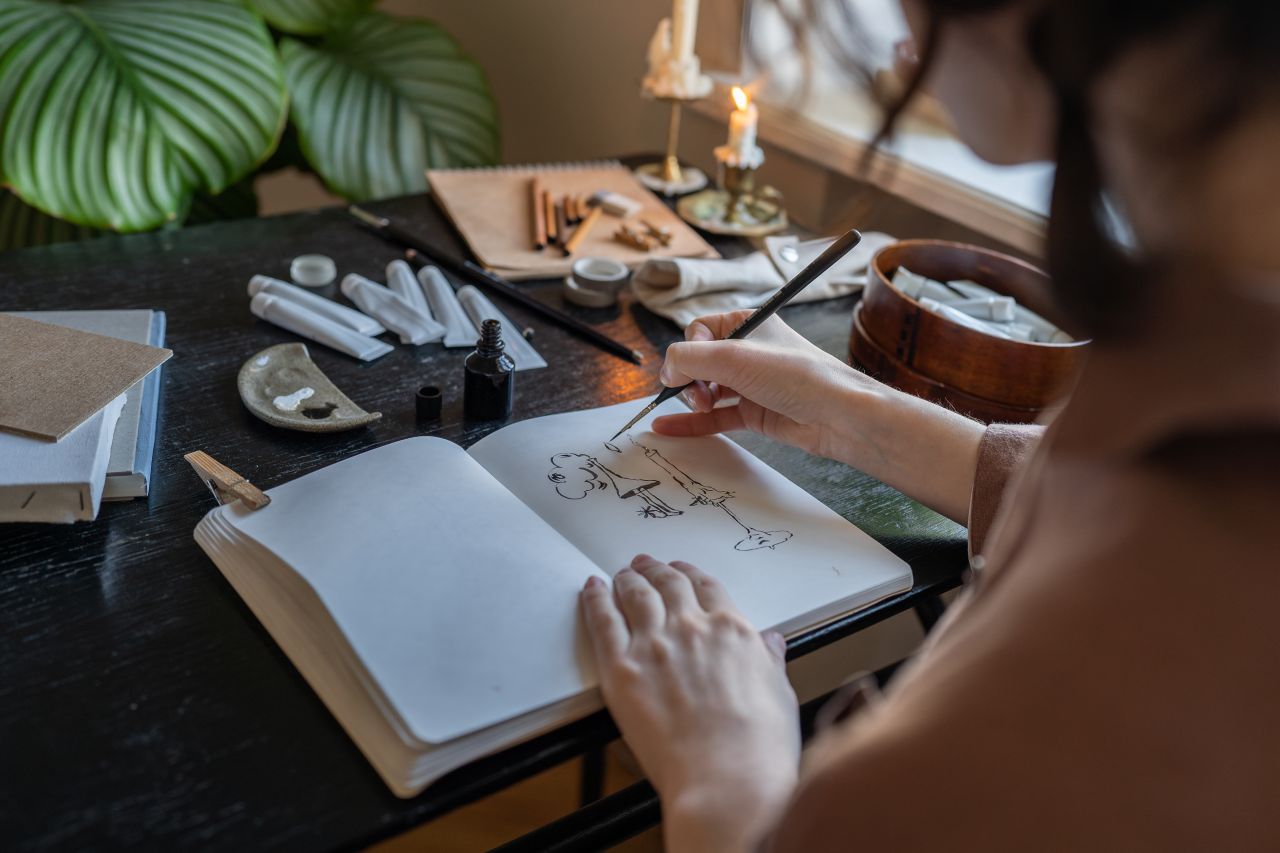How to Use Journaling as a Tool for Creative Growth
Journaling is a timeless practice, revered by artists, writers, and thinkers across centuries. Beyond its well-known benefits for mental clarity and emotional health, journaling is a powerful tool for nurturing creativity.
It provides a space to explore ideas, refine skills, and push the boundaries of imagination. Here’s how to leverage journaling for creative growth in a meaningful and effective way.
Unlocking the Mind Through Freewriting
Freewriting is an essential journaling technique that taps into the subconscious mind. The idea is simple: write without worrying about grammar, structure, or coherence. This uninhibited flow of thoughts often reveals unexpected ideas or patterns, helping to overcome creative blocks.
Freewriting bypasses the inner critic, allowing thoughts to emerge unfiltered. It’s particularly effective for brainstorming new ideas or developing storylines, sketches, or designs.
Dedicate 10-15 minutes daily to writing whatever comes to mind. Use prompts if you feel stuck questions like, What excites me right now? or What challenges am I facing creatively? can provide a starting point.
This technique also serves as a warm-up, priming the mind for deeper creative work. Over time, you’ll notice recurring themes and ideas that can be developed further.
Reflecting on Creative Milestones
Journaling offers an opportunity to document and analyze your creative journey. By reflecting on past projects and milestones, you gain valuable insights into your growth, strengths, and areas for improvement.
Record your projects from inception to completion. Documenting the challenges and triumphs along the way helps you identify what works and what doesn’t.
Acknowledge your achievements, no matter how small. Writing about them reinforces confidence and motivates you to tackle bigger challenges.
Reflect on creative setbacks and the lessons they bring. Ask questions like, What did this experience teach me? or How can I approach similar challenges differently in the future?
Regularly reviewing your journal entries enables you to spot patterns, discover areas for growth, and maintain a sense of direction in your creative pursuits.
Sparking Innovation with Visual Journaling
Sometimes, creativity thrives beyond words. Incorporating visuals into your journaling practice through sketches, mind maps, or mood boards can stimulate new ideas and perspectives. Visual journaling is especially effective for those working in design, art, or other visually-driven fields.
Use your journal as a sandbox for doodling, sketching, or creating rough drafts. The goal isn’t perfection but exploration.
Pair visual elements with written reflections. For example, a mind map of a project idea can be accompanied by notes explaining your thought process.
Colored pens, markers, and collage materials can bring your journal to life. If you prefer digital tools, apps like Procreate or Canva can serve as virtual journals.
Visual journaling not only enhances creative thinking but also provides a multi-sensory experience, making the process more engaging and enjoyable.
Establishing a Ritual for Consistency
The key to reaping the benefits of journaling lies in consistency. Establishing a ritual around your journaling practice ensures it becomes a regular part of your creative routine.
Find a time of day that works best for you—whether it’s early morning for fresh ideas or evening for reflection.
Choose a quiet, comfortable spot for journaling. This can help signal to your mind that it’s time to focus on creativity.
If you’re unsure where to start, use prompts tailored to your field. Writers might explore themes or characters, while designers might brainstorm solutions to specific problems.
Journaling isn’t about producing polished work; it’s about exploration and growth. Allow yourself to make mistakes and learn from them.
Over time, this ritual becomes a creative anchor, offering both structure and freedom. It helps you stay committed to the practice, even on days when inspiration feels elusive.
Conclusion
Journaling is more than a reflective practice—it’s a powerful catalyst for creative growth. By integrating techniques like freewriting, reflecting on milestones, visual journaling, and establishing consistent rituals, you can unlock new dimensions of your creativity. Whether you’re a seasoned professional or just starting your creative journey, a journal can serve as a trusted companion, capturing your ideas, documenting your progress, and inspiring your next breakthrough.
References
Here are some resources to further explore the practice of journaling for creativity:
- The Artist's Way by Julia Cameron
- Journaling for Creativity: Why Writers Keep a Notebook
- How to Use a Journal for Creative Writing
- The Science Behind Journaling and Creativity
- Benefits of Visual Journaling for Artists
- Rituals for Creative People
- Journaling Prompts for Creative Inspiration
- Freewriting as a Creative Practice
- How Journaling Enhances Mindfulness and Creativity
- Visual Thinking and Creativity.



































































